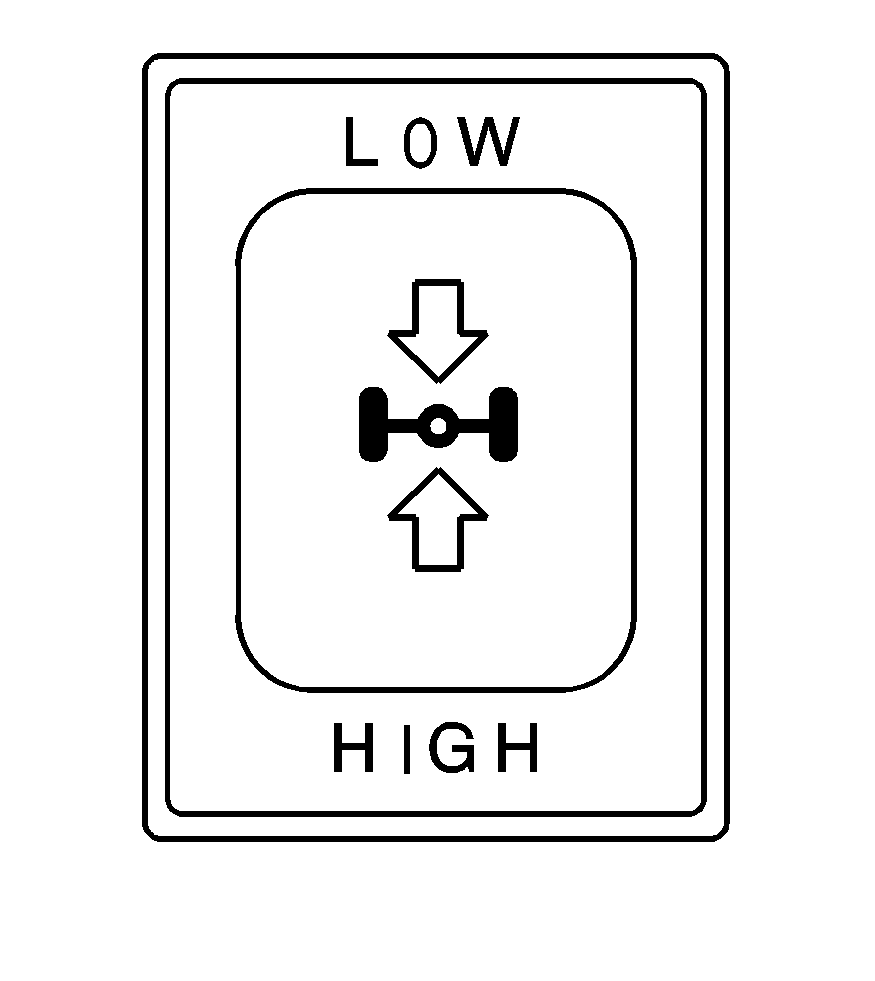The Two-Speed rear axle lets the driver select Low Range and High Range. Low Range provides good starting torque and pulling power. When selecting High Range the axle allows for higher road speed and fuel economy.
For better performance during off-road or under a heavy load, shift the axle into Low Range and then operate the transmission normally.
For better performance on the highway, shift the axle to High Range and operate the transmission normally.
High or Low Range can be used when additional shifts between transmission gears is needed while driving on grades and for better fuel economy.
Notice: Driving in Low Range above 50 mph (80.5 kph) will damage driveline components. Drive below 50 mph (80.5 kph) in Low Range.
If the vehicle has this feature, there is a label on the headliner above the windshield or in another place near the driver that shows how to use it. Be sure to follow the directions carefully.
Two-Speed Rear Axle Shift Control Operation

The rear axle shift control switch for automatic and manual transmissions is located in the instrument panel switchbank.
Press the bottom of the switch for High Range and the top of the switch for Low Range.
Always start the vehicle in motion with the two-speed axle in low range.
Shifting on a Downgrade
Do not shift the two-speed axle when driving on a downgrade. The speed of the vehicle moving downhill may make it hard to shift the axle into either Low or High Range.
Shifting
Upshifting the Axle
To shift from Low to High Range:
- Press the bottom of the switch to shift the axle control from Low to High.
- Release the accelerator pedal until the shift applies.
- Then push the accelerator pedal.
Axle upshift can be abrupt, causing the vehicle to jerk. Release the accelerator slowly for a smooth shift. For manual transmissions, use the clutch while pressing the accelerator for a smooth shift.
Downshifting the Axle
To shift from High to Low Range:
- Press the top of the switch to shift from High to Low Range.
- Release the accelerator pedal.
- Then push the accelerator pedal slowly until the axle shifts.
Split Upshift (Manual Transmissions Only)
To downshift the axle with a transmission upshift:
- Push the clutch.
- Shift the Transmission to a higher gear.
- Shift the axle control from High to Low Range.
- Release the clutch.
- Push the accelerator pedal until the axle shifts.
Split Downshift (Manual Transmission Only)
To upshift the axle with a transmission downshift:
- Shift the axle control from Low to High Range.
- Push the clutch.
- Shift the transmission to a lower gear.
- Release the clutch.
- Push the accelerator pedal until the axle shifts.
